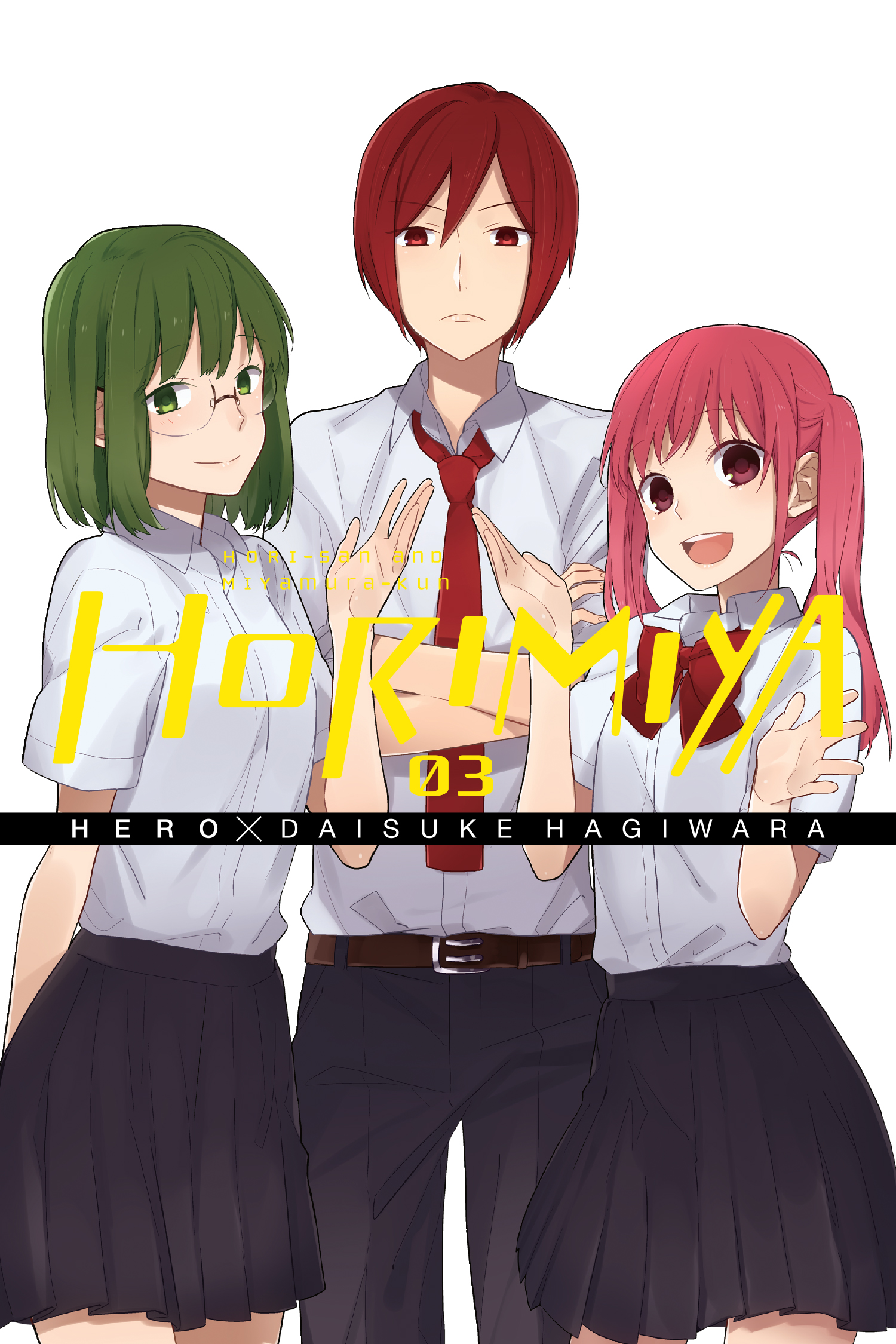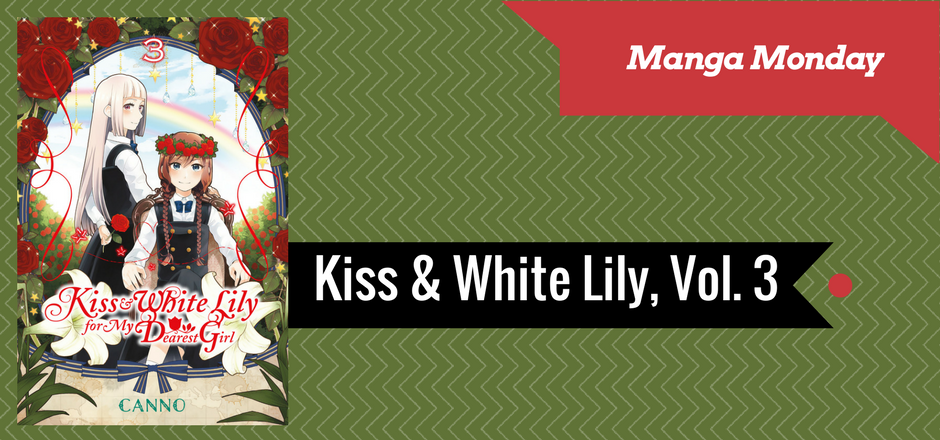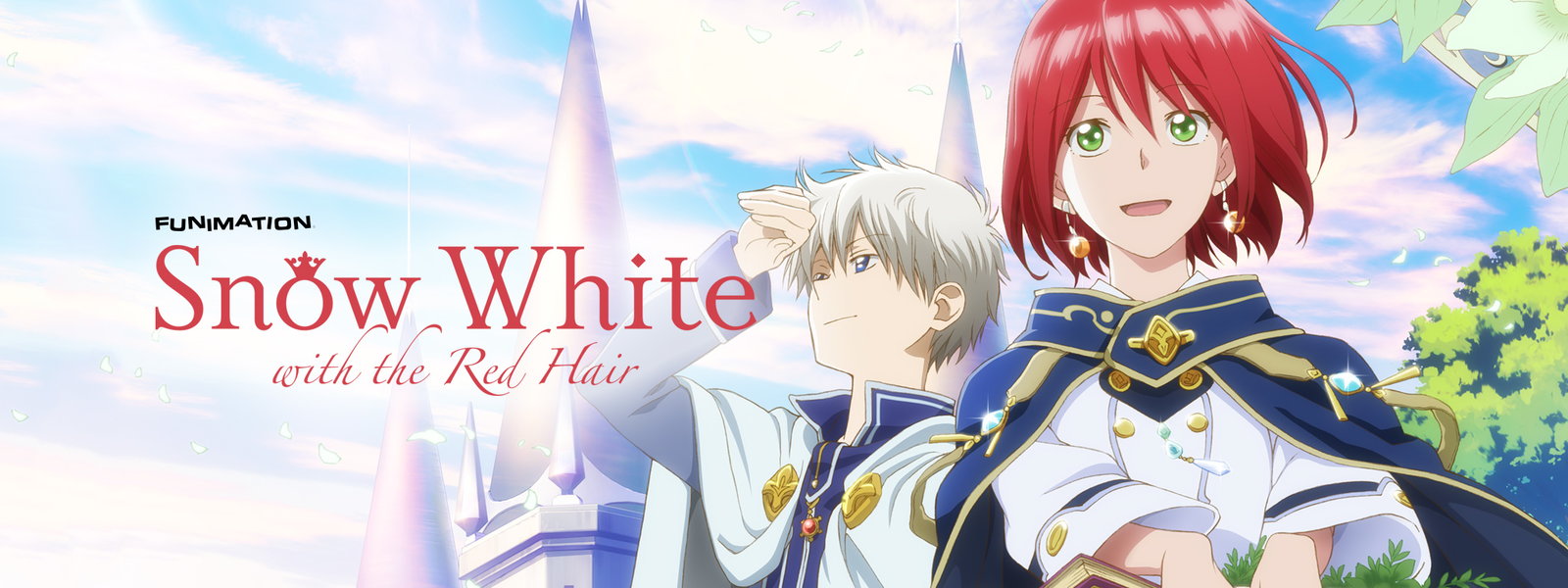Their schoolmates would say Kyouko Hori and Izumi Miyamura are total opposites: Hori is cheerful, pretty, and popular, while Miyamura is a gloomy, loner otaku. But Hori’s really a total homebody, and Miyamura (who does admit he’s pretty gloomy) isn’t an otaku at all — and he dresses that way to hide all his piercings and tattoos.
 Volume 3 of Horimiya is mainly a comedy of miscommunication. Hori and Miyamura are still dancing around confessing their feelings for one another; the people around them constantly misunderstand what they’re like or what they’re doing.
Volume 3 of Horimiya is mainly a comedy of miscommunication. Hori and Miyamura are still dancing around confessing their feelings for one another; the people around them constantly misunderstand what they’re like or what they’re doing.
There are a few side plots in Volume 3, as well: further introduction of the student council, a point at which Hori’s little brother Souta decides he wants his sister and Miyamura to spend more time together, and even a bit of exploration surrounding the other boys who are romantically interested in Hori.
While there’s a firmly tropey aspect of the several boys who have a romantic interest in Hori, one thing refreshing about this series is that none of the other people interested in the main couple are at all contenders: she has no interest in any of the boys aside from Miyamura, despite Miyamura’s insecurities and fears.
Hori is especially funny in Volume 3: while she exudes a cute and cheerful personality, the true personality that she lets Miyamura see is sort of petty, a bit crude, and sometimes rough, usually to a very comedic effect. It’s really rare to see characters like this in a manga, especially girls, and it’s really refreshing: in this volume, Hori acts the way my friends and I did when we were about the same age, and that aspect feels familiar and real.
This volume also depicts the main characters’ relationship developing, especially as it relates to how they communicate. Unlike slice-of-life series like Kimi ni Todoke, which is essentially entirely about one protagonist’s inability to communicate clearly, Horimiya presents their relationship very differently: when Miyamura is confused about something Hori does, he asks her directly why she’s doing it.
(Frankly, most people could probably stand to learn to do this in their own life.)
One thing that keeps me reading Horimiya is Daisuke Hagiwara’s art style. While the manga is adapted from a web comic by HERO, Hagiwara’s art is very pleasing, and the differences in character designs make it nice and clear for a reader to keep everyone distinguished.
Horimiya continues to be one of the best slice-of-life manga I’ve read in quite some time, and the way the series approaches the protagonists’ relationship is quite different from a lot of other romance manga series available in the US. I would definitely recommend Horimiya to readers of young adult romance interested in checking out a manga for the first time.
Story: 4.5 out of 5 stars
Art: 4 out of 5 stars
Overall: 4.5 out of 5 stars






